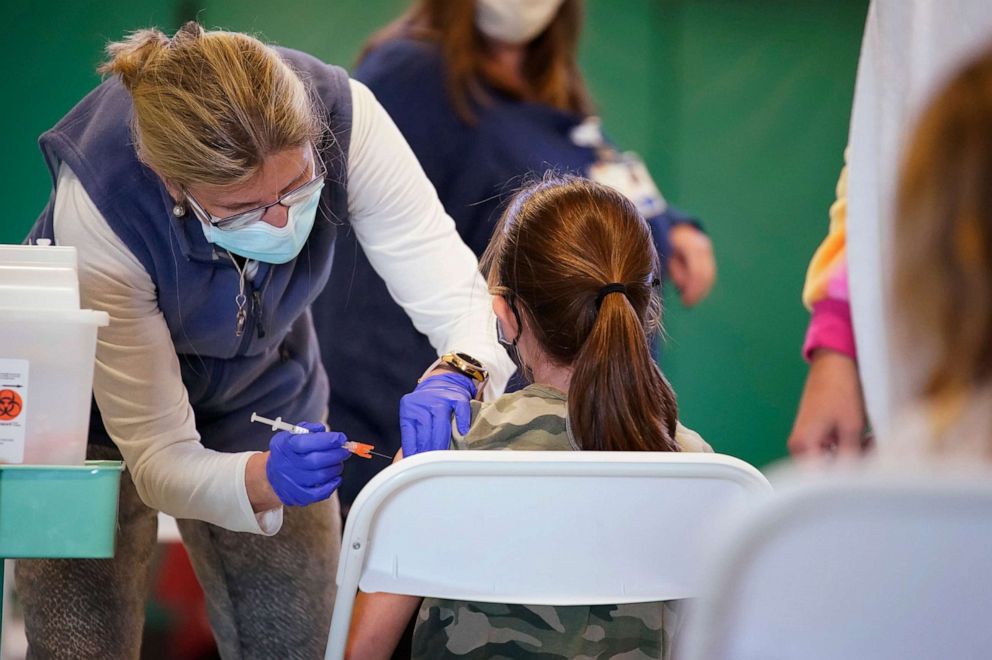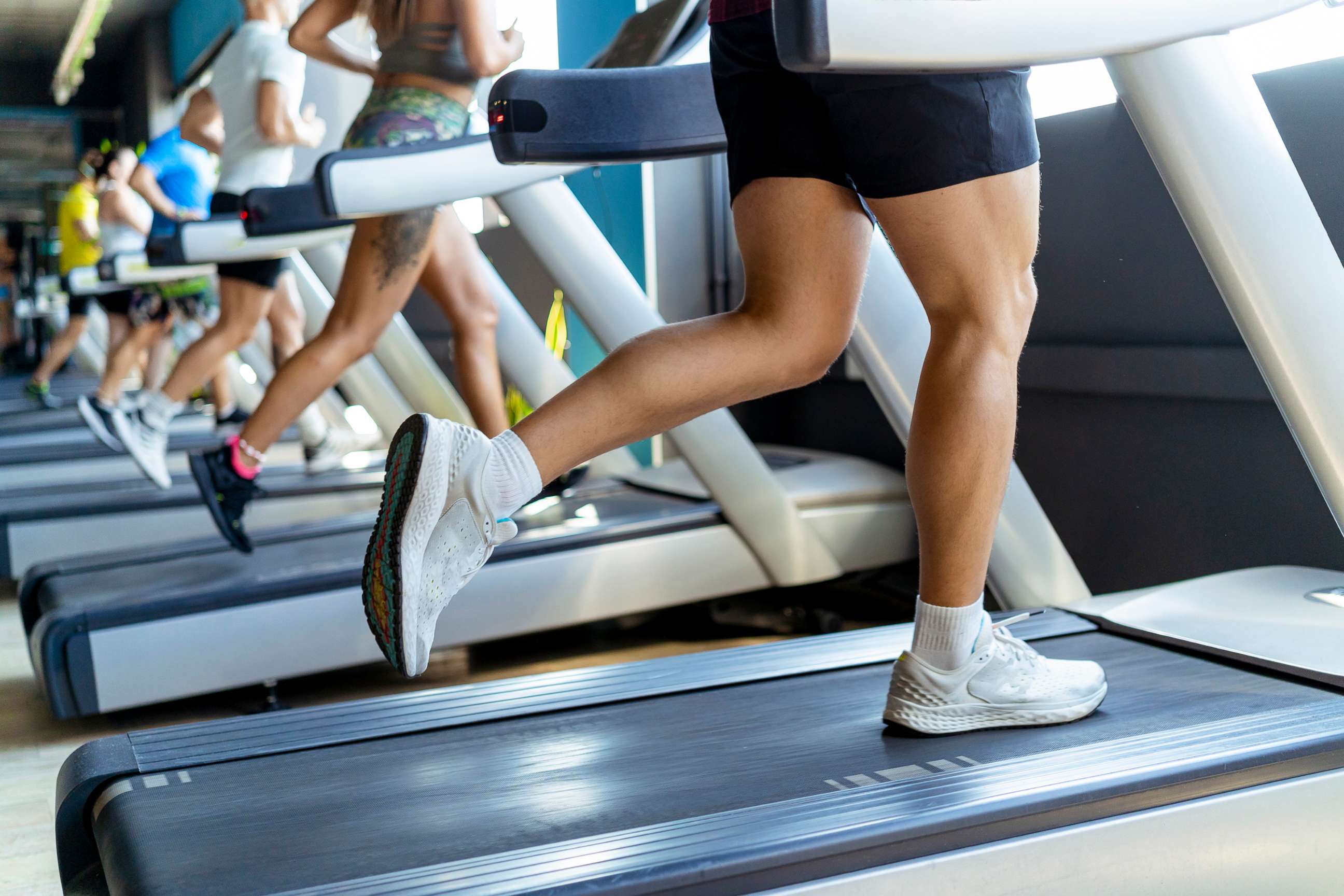How athletes can return to exercise after COVID-19 infection: New guidance released
Heart inflammation after COVID-19 is rarer than doctors originally thought.
Throughout the pandemic, several professional and collegiate sports leagues cancelled major events and seasons, in part to slow the spread of COVID-19, but also due to alarming reports of athletes developing a syndrome called myocarditis -- inflammation of the heart muscle -- following a COVID-19 infection.
After two years of research, the American College of Cardiology released guidance Tuesday that states the incidence of heart inflammation among athletes after COVID-19 is lower than originally thought, but they still suggest a step-by-step plan to help competitive athletes and weekend warriors alike that will help them safely return to their activities.
"For athletes recovering from COVID-19 with ongoing cardiopulmonary symptoms ... further evaluation should be performed before resuming exercise," the ACC Expert Consensus Decision Pathway, which was published in the Journal of the American College of Cardiology, states. "For all others who are asymptomatic or with symptoms less suggestive of a cardiopulmonary etiology ... additional cardiac testing is not recommended."
Evolving science
Doctors were performing "very rigorous testing searching for myocarditis" early in the pandemic, Dr. Tamanna Singh, co-director of the Cleveland Clinic Sports Cardiology Center, who was not involved in the new guidance, told ABC News, noting that, at the time, they were worried that the incidence of myocarditis "was going to be much higher than it actually was."

Back in September 2020, when much was still unknown about COVID-19, researchers at Ohio State University examined 26 athletes following a mild COVID-19 infection that did not require hospitalization. Myocarditis was found in 15% of the athletes, while 30% had developed a scar on their heart, raising a sense of uncertainty surrounding the safety of athletes returning to play following an infection.
"While the data on cardiomyopathy is preliminary and incomplete, the uncertain risk was unacceptable at this time," Big Ten commissioner Kevin Warren wrote in an August 2020 open letter on the decision to cancel the college conference's 2020-2021 fall sports season.
But over time, it was discovered that the incidence appears to be much lower than first thought.
"Many conferences, including the Big Ten, were doing cardiac MRIs on every athlete who recovered from COVID, and what they found was that the incidence of serious MRI abnormalities was very low, on the order of 1 to 2%," said Dr. Nicole Bhave, a cardiologist and echocardiographer at the University of Michigan and a co-chair of the committee that released this new guidance.
Typical rates for myocarditis involvement in athletes is "very low, with rates typically being around 0.6 to 0.7%," Singh said.
While experts' understanding of COVID-19 evolves, it is clear that many patients continue to have symptoms, obvious or subtle, following infection. And while not every athlete with COVID-19 will experience myocarditis, it’s dangerous enough to make doctors take notice.
"Myocarditis is a very rare but serious complication of COVID," Bhave said. "Patients with COVID myocarditis really should be managed at a high-level center [with the proper equipment], because these patients can go south fast."
Guidance for athletes
The new ACC guidance suggests that it is safe for athletes with no symptoms from COVID-19 to return to exercise three days following self-isolation. For those with mild symptoms not involving the heart or lungs, it is safe to return to exercise once symptoms resolve.
Athletes suffering from persistent chest pain, palpitations or passing out require further cardiac testing. If the findings are concerning for myocarditis, the ACC recommends abstinence from exercise for three to six months.
"We don’t think that a routine MRI is needed for everyone who has had COVID before they start exercising again," Bhave said.
If an athlete has persistent symptoms, Bhave said, "One of the recommendations that we’re making in the document is that people engage in recumbent exercise, so rather than trying to walk, doing something where they’re actually sitting down, so that orthostatic intolerance [the inability to tolerate quick movements] isn’t a big deal."

For athletes who experience long-haul COVID-19 symptoms, the recovery process can be frustrating.
"You’re essentially seeing someone who has had a decade and a half, maybe even two decades, of unrestricted sports participation and unlimited exercise capacity who now has severe limitations," Singh said. "They’re losing not only their physical connection to self, but also their social connection to their community, which can be really mentally devastating."
Singh and Bhave both said that re-introduction of exercise following infection should be gradual, starting with small amounts and increasing frequency, duration and intensity as tolerated.
"It’s important as physicians to say, ‘Hey, I’m here with you, and I know you’re still not back to where you were. I share your frustration and I’m not going to abandon you,'" Bhave said. "We still have a lot to learn, and I think that’s a message that is very helpful to patients who are feeling frustrated."
Nicholas P. Kondoleon, M.D., is an internal medicine resident at Cleveland Clinic and a contributor to the ABC News Medical Unit.




